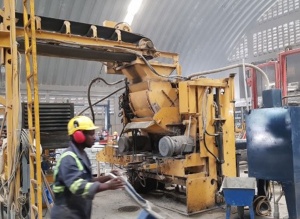By CEO Erwin Spolders
Factories in Ghana can benefit from REDAVIA’s three easy, but often unused, ways to reduce their power costs.
During our time working in the energy sector in Ghana, I have noticed high grid power bills in factories, both from high fixed costs (mainly maximum demand charge and power factor surcharge) and high variable cost (per kWh energy charge, including surcharges).
Three easy but often overlooked measures immediately bring down costs for any factory in Ghana, be it plastics production, food processing, concrete manufacturing or another type:

1. Demand Charge Reduction
Fixed costs soar when a factory’s maximum apparent power (kVA) demand is much higher than their average demand. So, reducing the maximum demand reduces fixed costs by up to 15%. This reduction can be achieved in three ways:
- Load shifting: When a factory spreads their power consumption more evenly over time, their maximum demand charge will decrease and fixed costs will decrease as well. Load shifting is not always possible for operational reasons, so it is worthwhile for a factory to carry out a load assessment to determine which processes have which demand and then review whether processes can be rearranged to reduce peak demand.
- Maximum demand can also be reduced by peak shaving through an energy storage system; the battery – instead of the grid – serves the peak loads, so that the maximum grid-power demand decreases. Additionally, these batteries can be used for back-up power to critical loads in case of a grid outage, thereby improving factory reliability, reducing factory operating costs and increasing factory output quality.
- If maximum demand of the factory is during solar hours, an on-site solar farm can also use a combination of active and reactive power injection from the solar inverter to decrease the maximum demand charge. The power injected by the solar inverter compensates for the equivalent apparent power requirement from the grid so that the peak in apparent power drawn from the grid is reduced, thereby reducing maximum demand charge.
2. Power Factor Correction
In Ghana, the distribution system operator charges customers for having a poor power factor. (The power factor is the ratio of power it actually consumes [kW] to the power it draws from the grid [kVA]. Power factor ranges between 0 and 1, and factories in Ghana are charged extra for power factors less than 0.9). Typical causes of low power factor in factories are inductive loads, such as electric motors.
To avoid these charges, factories can invest in power factor correction devices, which will help with demand charge reduction as well. An on-site solar farm also helps in improving power factor through reactive power support, which, together with a power factor correction device, works synergistically to correct and bring power factor into the acceptable range set by utility companies. Using these methods, we’ve seen the complete elimination of power factor surcharge resulting in reductions of up to 12% of annual electricity bills for the client.
3. Energy Cost Reduction
The energy cost could be reduced in two ways:
- Reducing energy consumption: Using more energy efficient electrical equipment, such as LED lights and high efficiency motors, and optimizing HVAC (heating ventilation & air conditioning) system using programmable thermostats or HVAC duct and building insulation.
- Utilizing a cheaper source of energy: Installing an on-site solar farm reduces the energy costs. The solar farm feeds in directly into the power system of the factory (“behind the meter”), reducing the amount of energy drawn down from the grid during solar hours and thereby reducing the energy charge invoiced by the utility. With our solar farms, we have realized reductions of up to 10% of our clients’ annual energy bill.
There are many options for factories to reduce their power cost. By a combination of the techniques listed above, 10-25% total bill reduction is usually possible. Ask REDAVIA for a free assessment of your savings potential today.
